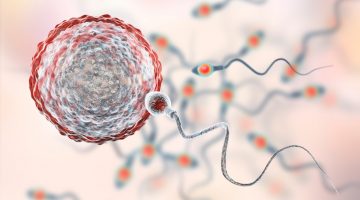Why Can’t I Get Pregnant

Human reproduction is an incredibly complex subject that requires a vast network of important biological functions to come together in a remarkable way. Truly, reproduction is the miracle of life. But with such a complex series of events that must take place for reproduction to go accordingly, there are many places where something can go wrong. We generally refer to these as infertility factors. can be divided into a few main categories.
What causes infertility?
Ovulatory Factors:
Infertility due to a woman’s inability to regularly release eggs, or produce sufficient progesterone, accounts for a significant portion of infertility cases. Progesterone is a hormone produced by the ovaries that transform the uterine lining allowing a fertilized egg to implant and grow. Progesterone is produced only after ovulation.
A woman’s menstrual cycle is an important indicator of ovulation – a regular period every 21 to 35 days may indicate normal ovulation. A woman with irregular cycles is probably not ovulating. Of course, the only true sign that a woman is ovulating is a pregnancy.
Uterine & Tubal Factors:
Uterine and Tubal Factors account for another major cause of infertility. A woman who has a history of pelvic or abdominal surgery, appendicitis, endometriosis and uterine/tubal surgery may have her fertility chances adversely affected. Also, pelvic infections (such as gonorrhea or chlamydia) and the use of an IUD contraceptive device is known to cause infertility. Defects in the uterus, scar tissue and dilated or closed tubes may all be a result of the above conditions. Even if a woman has not had any of these conditions, a thorough evaluation may still be in order.
Male Factors:
Abnormal sperm accounts for another significant portion of cases. Abnormally shaped sperm, low motility and low count are all signs that a man’s sperm may have difficulty fertilizing the woman’s egg.
Unexplained Infertility:
The remaining cases of infertility may involve a multitude of subtle problems with the immune system, genetic disorders, endometriosis, implantation or fertilization defects or may even remain unexplained. We are beginning to understand that inflammation may be the overarching number one cause of infertility.
The most frustrating case is when all tests come back normal and the couple still cannot seem to conceive naturally. Yet, many of these subtle problems are likely responsible for the “unknown cases.”
Sometimes, factors that contribute to infertility can be less quantifiable. It has been determined that age plays a significant role in the ability to conceive. As a woman approaches 40 and beyond, her chances of conceiving with her own eggs reduce dramatically. Smoking, sexually transmitted diseases (STDs), body weight and a stressful lifestyle also factor prominently in a woman’s ability to produce eggs and carry a pregnancy.
It is very important to identify which factors may be contributing to infertility. The tests described on this site will help determine which course of action should be taken and which can be ruled out – saving the infertile couple the frustration and costs of unnecessary or ineffective treatments.
The basic infertility evaluation should include a mid-luteal progesterone blood test, HSG, and semen analysis – all of which can be performed in one cycle or month.




